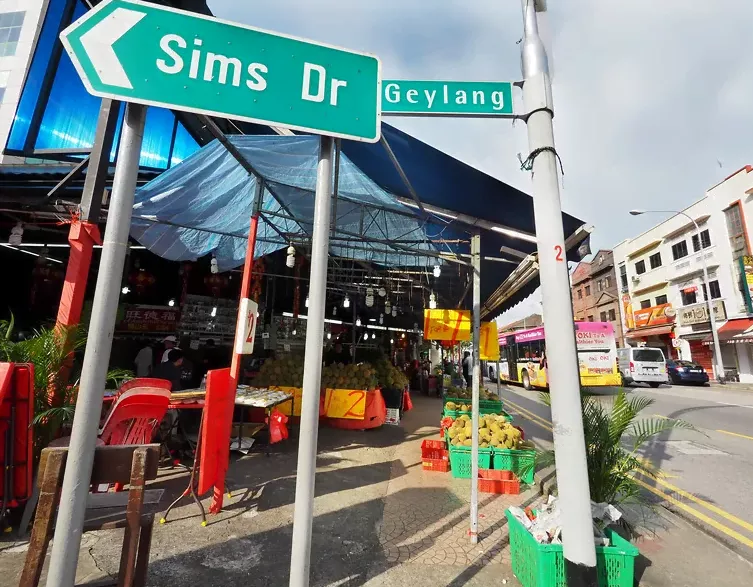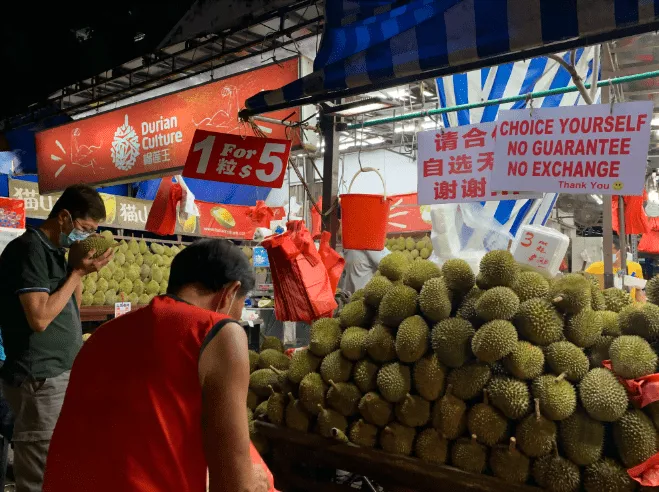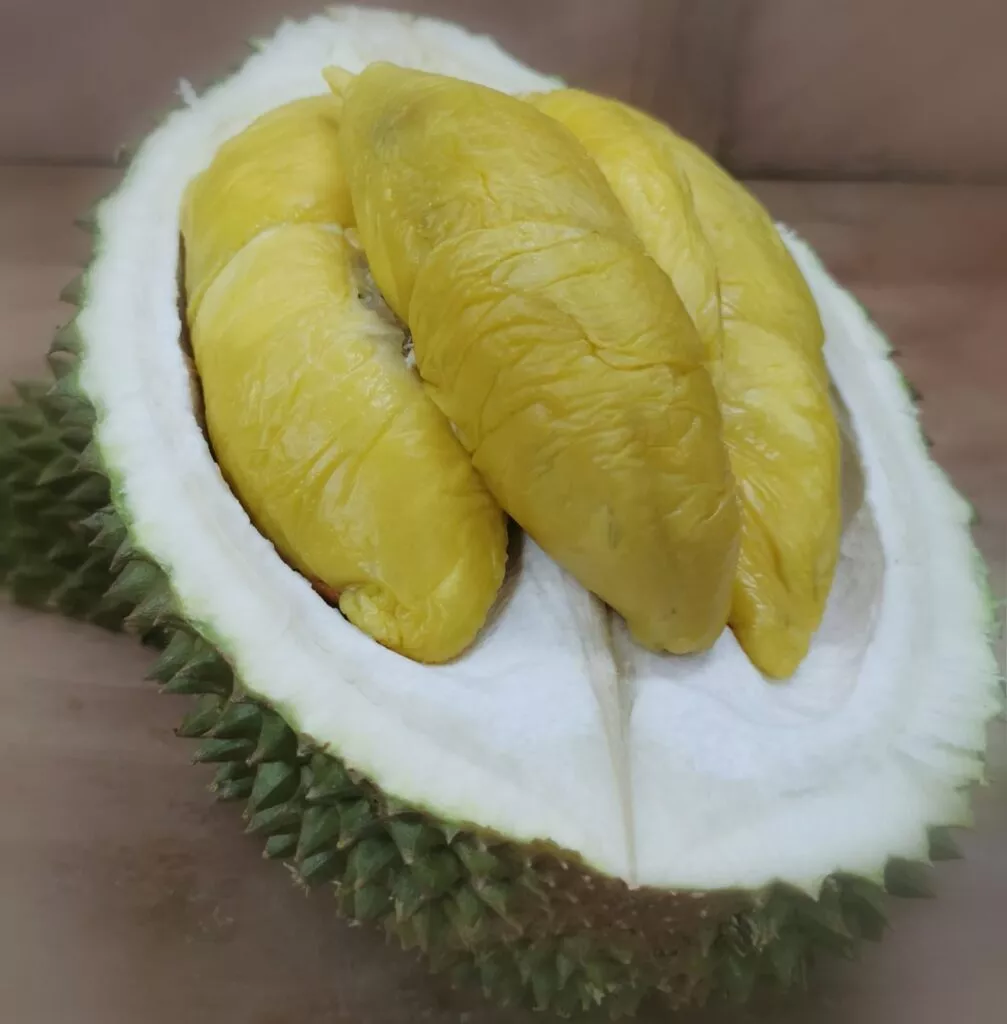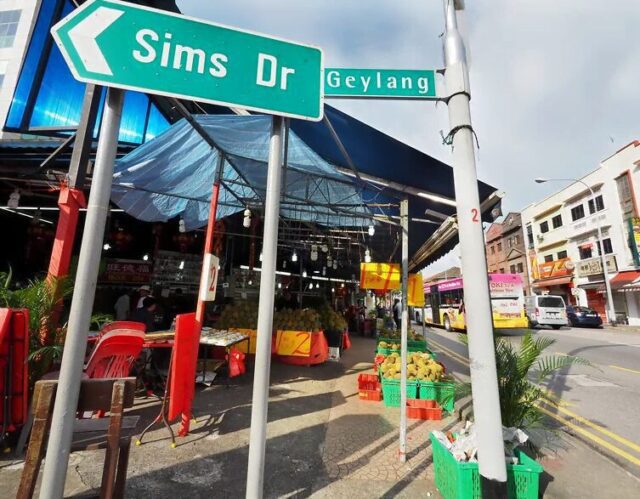Geylang durians, like any other place in Singapore that offers a good fill of durians, Geylang has it, too. If you were to ask any locals, most would recommend Geylang durians. Despite being known as a red-light district, Geylang is rich in history and offers a variety of local food.

History of Geylang
Located on the Eastern fringe of the city’s central region with Hougang and Toa Payoh in the north, Marine Parade in the south, Bedok in the east, and Kallang in the west, Geylang is home to Singapore’s oldest Malay settlements.
Although it’s one of the most peculiar neighborhoods in the city, Geylang is juxtaposed against various places of worship, Peranakan shophouses, and long-standing restaurants and hawker stalls.
The Geylang Serai was initially a lemongrass plantation estate cultivated by Alsagoff and Company – a company founded by an Arab family in 1848. After merging with another 1,000-acre land in Geylang Serai, it became the largest estate in the area, stretching from Geylang Serai to Jalan Eunos.
After the lemongrass industry failed in the mid-19th century, the factory was closed and subsequently converted into the Eastern terminal of Singapore’s first tramline. Today, Geylang is composed of north and south sections, divided by Geylang Road, with lanes extending perpendicularly from the main road.
What’s Special About Geylang?
Aside from being Singapore’s infamous red-light district, Geylang provides a different view of a hectic day and night due to a combination of scenery, which includes shophouses, durian stalls, foreign workers’ quarters, and karaoke lounges.
Additionally, the shophouses along Geylang Road are protected by the government to preserve its Malay cultural heritage. In the 2000s, the government decided to restore the shophouses in Geylang Serai. It’s now a center with a distinct cultural identity and remains one of the busiest and largest wet markets in Singapore.
There’s so much to learn and do in this part of the city. You can take a breather along the Geylang River, pamper yourself at a public bath, challenge your muscle strength with wall climbing, enrich yourself with the lesser-known stories of Geylang, and indulge in food tours.
Despite its appalling nature, Geylang is also home to a plethora of cuisines (think frog leg porridge and the famous crab bee hoon) tucked in every nook and cranny of this district. Not only that, it’s also home to the King of Fruits – locally known as the durian. You would be spoilt with choices as there are countless Geylang durian stall here.

Among the famous food spots in this area are Durian Culture, Wonderful Durian, Durian 36, Eminent Frog Porridge, No Signboard Seafood (a household name among Singaporean families), Mongkok Dim Sum, L32 Handmade Noodles, and many more.
Durian at Geylang

If you’re craving for some durian, you can always rely on Geylang Durian to satiate it. However, it’s especially dangerous if you’re a new durian lover as you’re more likely to get duped into buying durian at an unworthy cost.
For the best durian experience, it’s best to time your trip to the area as durian is a seasonal fruit. Despite its availability throughout the year in Singapore, you’re likely to encounter different types of durians with a different price tag.
The best time for you to visit Geylang Durian Street is when it’s the durian season in Malaysia, usually between June and August or November and January. You should also time your visit for late afternoon so that you get to have fresh durians from Malaysia. Durians from Johor typically arrive around 2pm while durians from Pahang only arrive later than 5pm.
Tips for Best Durian Geylang
To prevent from getting duped, you should first equip yourself with some basic knowledge about durians so that you can tell the difference at any durian stall in Geylang. Bear in mind that durians are a priced commodity in Singapore, making the price range vary according to breed, origin, and demand.
It’s also important to choose the right durian to suit your taste, given that there are so many types of durians. The following are some tips for you to get the best out of Geylang Durian:
| Durian Tips | Description |
| Check the stem | If it’s greenish with brown edges, you’ve gotten yourself a durian which fell off the tree in the past 24 hours. Make sure to avoid stemless durians as some sellers may try to pass off poor quality durians as good ones. |
| Smell the durian | If the durian smells sweet, it’s a ripe one. If it’s unripe, you won’t be able to smell anything from it. For overripe durians, they tend to exude a strong and intense smell. |
| Examine the shape | One way to find out whether it’s a good or bad durian is to examine the shape and appearance. In some cases, odd-shaped durians may taste good with fewer chambers and flesh-covered seeds. |
3 important ‘S’ (Stem | Smell | Shape)
Get Your Durian Cravings Fixed
For an instant fix of your durian cravings, getting them delivered by an honest durian seller to your home in Geylang is your best solution. That’s because Durian Delivery Singapore offers various types of durians at the most competitive pricing. Besides, the durians are specially handpicked from our solely-owned durian plantation in Pahang, Malaysia, to give you only the freshest durians. Wait no more and get the best out of Geylang Durian Delivery!



